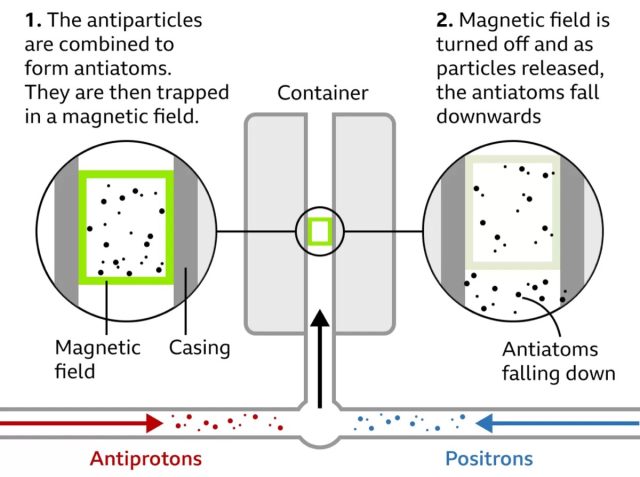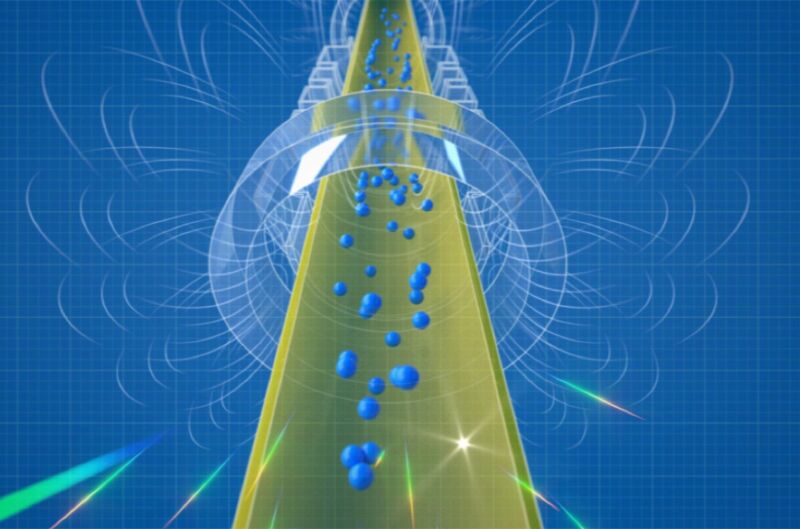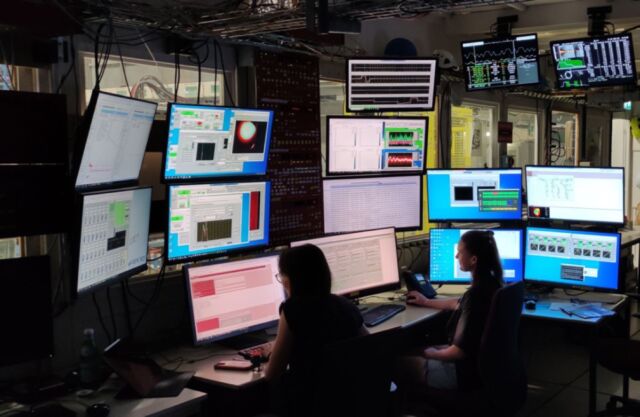CERN physicists have shown that antimatter falls downward due to gravity, just like regular matter, according to a new paper published in the journal Nature. It's not a particularly surprising result—it would have been huge news had antimatter been found to be repulsed by gravity and "fall" upward—but it does tell us a bit more about antimatter and brings physicists one step closer to resolving one of the most elusive mysteries surrounding the earliest moments of our universe.
As the name implies, antimatter is the exact opposite of ordinary matter, as it is made of antiparticles instead of ordinary particles. These antiparticles are identical in mass to their regular counterparts. But just like looking in a mirror reverses left and right, the electrical charges of antiparticles are reversed. So an anti-electron would have a positive instead of a negative charge while an antiproton would have a negative instead of a positive charge. When antimatter meets matter, both particles are annihilated and their combined masses are converted into pure energy. (It's what fuels the fictional USS Enterprise, as any Star Trek fan can tell you.)
As far as we know, antimatter doesn’t exist naturally in the known universe, although we can now create small amounts at places like CERN's Antimatter Factory. But scientists believe that 10 billionths of a second after the Big Bang, there was an abundance of antimatter. The nascent universe was incredibly hot and infinitely dense, so much so that energy and mass were virtually interchangeable. New particles and antiparticles were constantly being created and hurling themselves, kamikaze-like, at their nearest polar opposites, thereby annihilating both matter and antimatter back into energy in a great cosmic war of attrition.
Matter won. At some point in those first few fractions of a second, for reasons that continue to puzzle scientists, a small surplus of matter appeared. Even that tiny imbalance was sufficient to wipe out all of the antimatter in the universe in about one second. As the universe expanded, the temperature began dropping rapidly until it was too low to create new particle and antiparticle pairs. Only a small amount of “leftover” particles of matter remained; everything else had been annihilated, and their masses were emitted as radiation. Those bits and pieces make up the stars, planets, asteroids, and just about every other observable object in the universe.

It's known as the baryogenesis problem, and for physicists to one day solve that mystery, they first need to experimentally determine various antimatter properties—like how it responds to gravity. "Antimatter is just the coolest, most mysterious stuff you can imagine," co-author Jeffrey Hangst—a physicist at Aarhus University in Denmark and founder of the ALPHA collaboration—told BBC News. "As far as we understand, you could build a universe just like ours with you and me made of just antimatter. That's just inspiring to address; it's one of the most fundamental open questions about what this stuff is and how it behaves."
Albert Einstein developed his general theory of relativity well before Carl Anderson's discovery of the first antimatter matter particle (the positron, i.e., an anti-electron) in 1932. That theory treats all matter the same, so according to GR, antimatter should respond just like matter to the force of gravity. But some physicists pondered whether antimatter might instead be repulsed by gravity. Many indirect measurements made over the years have confirmed Einstein's prediction, but there hasn't been a direct observational result—until now, thanks to CERN's ALPHA experiment.



3175x175(CURRENT).thumb.jpg.b05acc060982b36f5891ba728e6d953c.jpg)

Recommended Comments
There are no comments to display.
Join the conversation
You can post now and register later. If you have an account, sign in now to post with your account.
Note: Your post will require moderator approval before it will be visible.